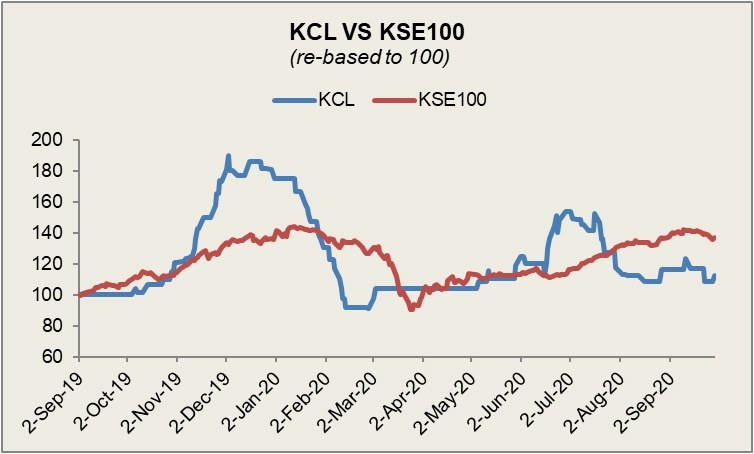Karam Ceramics Limited (PSX: KCL) was established in 1979 as a public limited company. Initially it was named “International Standard Ceramics Limited”; it later changed to its current name in 1982. The company’s main line of business is to manufacture tiles; tiles for indoor and outdoor, in addition to for bathroom flooring. Some of its clients include Dolmen Mall, Kidney Centre, Saima Mall, Bahria Town, Karachi and Model Town, Lahore.
Shareholding pattern
As of June 30, 2019, the company’s major shareholder are the directors, CEO, their spouses and minor children. Of the 93 percent shares held under this category, a little over 13 percent is held by both Vice Chairman, Mr. Irshad Ali S. Kassim and CEO, Mr. Munawar Ali S. Kassim, among others. Roughly 4 percent is with the local general public while the rest is distributed with the remaining categories.

Historical operational performance
Topline for Karam Ceramics has been fluctuating over the years with a major dip seen in FY17 and again much recently in FY20. Profit margins have also largely followed suit with a fall in FY17 which was repeated again in FY20.
In FY15, Karam Ceramics saw a marginal growth in its topline at nearly 2 percent. This was primarily a result of better market and economic conditions. However, the company was facing the menace of cheaper and imported tiles from China and Iran that had an adverse impact on the sales of locally manufactured tiles. However, despite the minimal growth in topline, a reduction in cost of production as a percentage of revenue helped to lift profit margins year-on-year, to 3 percent.

Sales revenue contracted by a little over 8 percent during FY16. Although the company introduced new sizes of tiles, it was however, in the last quarter of the year hence the full impact of it did not materialize. In addition, the influx of cheaper imported tiles from China and Iran continued to affect the local industry; this did not allow for local players to benefit from the increased demand generated through increased construction activities. The matter was taken to the National Tariff Commission (NTC) for imposition of anti-dumping duties and increase in Import Trade Price (ITP). While this marred profit margins from one end, cost of production, on the other hand rose to consume 95 percent of the revenue leaving little room for absorption of other costs. In FY15, the company had expected an increase in cost of production due to increase in gas tariff rates (Gas Infrastructure Development Charges (GIDC)) as well as Pakistani Rupee losing value against other currencies. Thus, the company incurred a net loss of Rs 22 million in FY16.

In FY17, sales revenue fell considerably by 28 percent. This did not just affect volumes but also their inability to command a higher selling price, especially with the persistent presence of cheaper imported products in the market. Cost of production also escalated during FY17 at more than 97 percent of revenue, thereby taking net loss to a high of Rs74 million.

Sales revenue growth recovered in FY18 as it grew by a whopping 41 percent. This was due to an increase in both volumes as well as an improvement in sale price. Cost of production also notably reduced to below the 90 percent mark after almost five years. This resulted in a major improvement in net profits, which although were low at Rs14 million, to cover previous losses, however in comparison to a negative net profit margin of almost 9 percent seen last year, it was a major improvement.

Karam Ceramics saw another year of double-digit sales growth in FY19, at almost 19 percent. This was again due to an improvement in selling price as well as volumes. Cost of production also fell to 87 percent of revenue that helped to lift profit margins. With most other factors remaining similar year on year, the effect of reduced cost and higher revenue together was translated into a higher bottomline.
Recent results and future outlook
In FY20, Karam Ceramics saw its sales revenue reducing by nearly 36 percent. Most of this decline in revenue was seen in the last quarter of FY20; it nearly halved on average compared to that seen in the previous three quarters. However, the company did not incur a loss in the last quarter, instead most of the loss was observed in the first quarter of the year that already put the company in a difficult situation. Not only were sales lower, but cost of production was negatively impacted due to increase in gas charges electricity and a general inflationary effect. However, net loss at Rs44 million was somewhat controlled by support from other income that increased abnormally.
Although the company was no exception to the havoc created as a result of the pandemic, with the announcement of the construction package by the government, it forecasts some recovery as it will directly generate demand for tiles.

























Comments
Comments are closed.